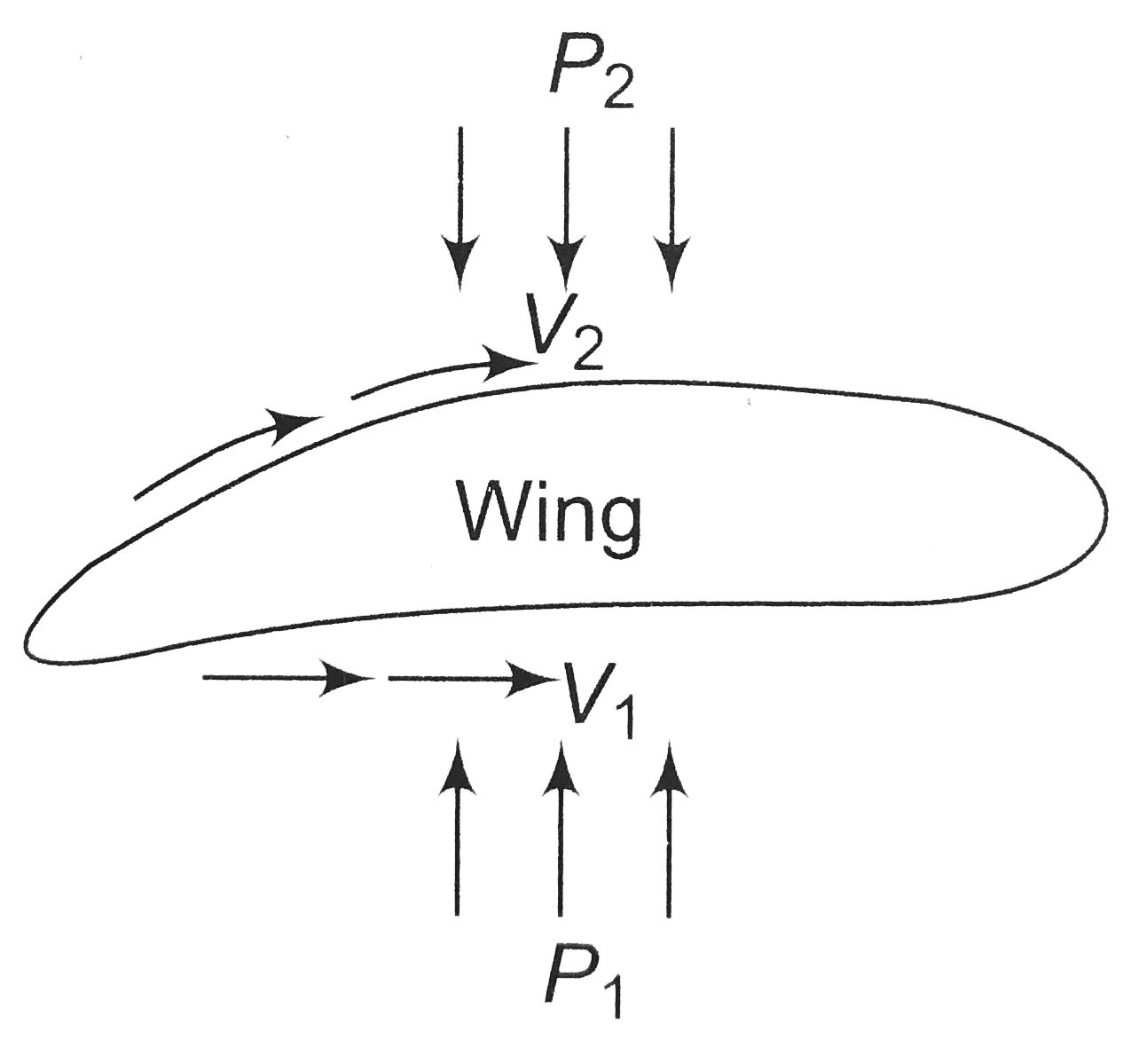A fully loaded Boeing aircraft has a mass of 3.3×105 kg, its total wing area is 500m2. It is in level flight with a speed of 960 km/h. a. Estimate the pressure difference between the lower and upper surfaces of the wings b. Estimate the fractional increases in the speed of the air upper surface of the wing relative to the lower surface. (The density of air is ρ=1.2kgm−3)
a. The weight of the Boeing aricraft is balanced by the upward force due to the pressure difference
ΔP×A=3.3×105kg×9.8
ΔP=(3.3×105kg×9.8ms−2)/500m2
=6.5×103Nm−2
b. We ignore the small height difference between the top andbottom sides in Eq. The pressure difference between them is then
Δ=ρ2(v22−v21)
Where v2 is the speed of air over the upper surface and v1 is the speed under the bottom surface.
(v2−v1s)=2Δρρ(v2−v1)
Taking the average speed
vav=(v2+v1)/2=960km/h=267ms−1, we have
(v2−v1s)/vav=ΔPρv2av≈0.08
The speed above the wing needs to be only 8% higher than that below.
Similar Questions
A fully loaded Boeing aircraft has a mass of 3.3×105kg. Its total wing area is 500m2 . It is in level flight with a speed of 960km/h.
(a) Estimate the pressure difference between the lower and upper surfaces of the wings
(b) Estimate the fractional increases in the speed of the air on the upper surfaces of the wing relative to the lower surface. The density of air is 1.2kg/m3.
View SolutionA fully loaded Boeing aircraft has a mass of 3.3×105kg. Its total wing area is 500m2 . It is in level flight with a speed of 960km/h.
(a) Estimate the pressure difference between the lower and upper surfaces of the wings
(b) Estimate the fracitional increases in the speed of the air on the upper surfaces of the wing relative to the lower surface. The density of air is 1.2kg/m3.
View Solution
Knowledge Check
An aircraft of mass 4×105kg with total wing area 500m2 in level flight at a speed of 720 km h^(-1).Thedensityofaatitsheightis1.2 kgm^(-3).Thetional∈creases∈thespeedoftheairontheuppersurfaceofitsw∈gsrelative→thelowersurfaceis(takeg = 10 ms^(-2))
A0.04B0.08C0.17D0.34An aircraft of mass 4×105kg with total wing area 500m2 in level flight at a speed of 720 kmh−1. The density of a at its height is 1.2kgm−3. The fractional increases in the speed of the air on the upper surface of its wings relative to the lower surface is (take g=10ms−2)
A0.04B0.08C0.17D0.34An aircraft of mass 4×105kg with total wing area 500m2 in level flight at a speed of 720 kmh−1. The density of a at its height is 1.2kgm−3. The fractional increases in the speed of the air on the upper surface of its wings relative to the lower surface is (take g=10ms−2)
A0.04B0.08C0.17D0.34
A fully loaded Boeing aircraft 747 has a mass of 33×105kg. Its total wing area is 500m2. It is in level flight with a speed of 960 km/h. Estimate the pressure difference between the lower and upper surfaces of the wings.
View SolutionAn aeroplane of mass 3×104kg and total wing area of 120 m2 is in a level flight at some height the difference in pressure between the upper and lower surfaces of its wings in kilo pascal is (g=10m/s2)
View SolutionThe speed of flow past the lower surface of a wing of an aeroplane is 50ms−1. What speed of flow over the upper surface will give a dynamic lift of 1000pa? Density of air =1.3kgm−3

View SolutionAn aeroplane of mass 3×104kg and total wing area of 120 m2 is in a level flight at some height the difference in pressure between the upper and lower surfaces of its wings in kilo pascal is (g=10m/s2)
View SolutionAn aeroplane of mass 3×104kg and total wing area of 120 m2 is in a level flight at some height the difference in pressure between the upper and lower surfaces of its wings in kilo pascal is (g=10m/s2)
View Solution
